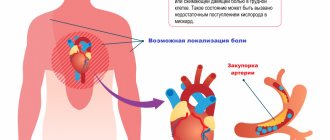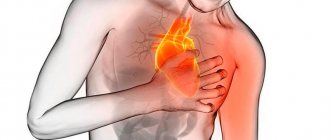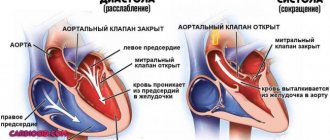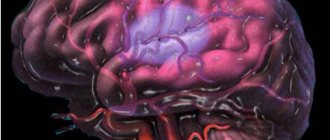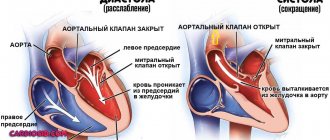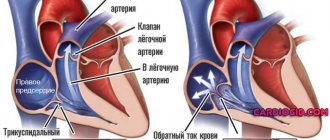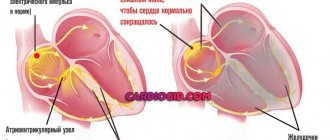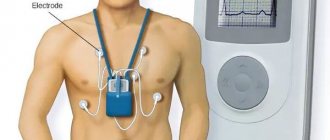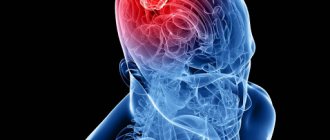The article will present the Braunwald classification of unstable angina.
With ischemic heart disease, angina attacks almost always occur. Severe pain develops when the myocardium begins to lack oxygen. When the syndrome develops against the background of physical activity, we are talking about stable angina pectoris, which accompanies increased heart activity. However, the following situations also occur: severe symptoms in the form of painful pressure in the chest, burning and suffocation are in no way related to the activity of the heart muscle. An anginal attack can strike a person suddenly, and it is impossible to predict its occurrence. In this case we are talking about unstable angina. In accordance with the tenth edition of the International Classification of Diseases, pathology refers to diseases of the circulatory system and has its own code 120.0.
Braunwald's classification of unstable angina will be presented below.
Stable and unstable angina
The very name of unstable angina characterizes the complex of symptoms that arise. The condition can manifest itself without reference to physical activity or other provoking factors. This is precisely the main difference between the pathology in question and stable type angina.
Stable angina is characterized by the presence of a certain set of provoking factors:
- Emotional stress.
- Unfavorable weather with snow, rain, cold wind.
- Established boundaries for physical activity (for example, walking at a fast pace for a distance of more than half a kilometer, climbing stairs higher than the first floor).
Stable angina can have one of four functional classes, each of which has certain permissible levels of physical activity and its own degree of severity of clinical symptoms.
An attack of stable angina stops with rest, can last a maximum of 15 minutes, and is effectively stopped by using Nitroglycerin.
With unstable angina, there is a great danger to the patient’s life, since it is impossible to predict its occurrence and clinical picture, there is no way to determine the permissible level of stress for the patient, and it is difficult to identify provocative factors. Any of these attacks occurs suddenly, is unpredictable in its manifestation, threatens the onset of myocardial infarction, and the patient may die from sudden cardiac arrest. In this case, the symptoms are more severe. An attack can last up to half an hour, and Nitroglycerin is not always effective.
Typical signs of Prinzmetal's angina
New York cardiologist M. Prinzmetal described a type of angina pectoris in 1959, which is included in the modern classification of unstable forms of angina pectoris. In pathogenesis, great importance is attached to the increased tone of the vagus nerve.
Features of the clinic:
- occurs more often in young men;
- attacks of pain occur at rest, there are characteristic ECG changes;
- patients do not complain of pain during physical activity and tolerate it well;
- attacks often occur in the morning rather than during the day or at night;
- good effectiveness in treatment with drugs from the group of nitrates and calcium antagonists.
The prognosis of this form is unfavorable due to the high probability of transition to acute myocardial infarction.
Causes of development of unstable angina
An attack in coronary artery disease occurs when a prerequisite is present - the patient has a violation of the coronary circulation and narrowing of the arteries. Excess cholesterol settles on the vascular walls, atherosclerotic plaques appear, as a result of which the lumen of the artery decreases. Thus, not enough blood flows to the heart. In such conditions, the myocardium begins to work more intensely to replenish the insufficient level of blood supply, but the situation only gets worse. This is due to the fact that the heart, during intense activity, requires an even greater amount of oxygen, which comes exclusively from the blood.
When arterial patency deteriorates by more than 50%, hypoxia increases, which reaches critical limits. Metabolic processes begin to disturb the cells, which is accompanied by pathological changes in intracellular structures. At such moments a person experiences unbearable angina pain. Due to a prolonged attack, tissue necrosis begins and spreads, resulting in myocardial infarction.
IHD and angina pectoris (ICD code 10 I20) develops when the heart has an acute need for large portions of oxygen (stress, physical activity), and damaged coronary vessels are not able to supply the heart muscle with a sufficient volume of blood.
When an atherosclerotic plaque grows to an impressive size, there is a possibility of a violation of its integrity. This happens in cases where there are a lot of fat deposits and not enough collagen, and the vascular wall is inflamed or the blood has increased viscosity. The detached part of the plaque is glued together by platelets, resulting in the formation of a blood clot that can partially or completely block the arterial lumen. This is the main cause of unstable angina. Such blood clots can migrate and penetrate into any part of the coronary vessels.
Another reason for the development of coronary artery disease and angina pectoris (ICD code 10 I20) pathology is sudden spasms of the coronary vessels that occur regardless of physical activity. In this case, arteries that are not affected by atherosclerosis can narrow. A similar situation is typical for vasospastic angina (Prinzmetal), which is a rather rare pathology.
Mechanism of pathology
The blood supply to the heart muscle requires a constant supply of sufficient blood through the coronary arteries. The heart's need for oxygen changes depending on the conditions: physical activity, complete immobility, excitement, intoxication of the body due to infectious diseases.
In contrast to the calm state, tachycardia occurs (increased heart rate). It requires more energy, which means oxygen consumption increases, since the heart muscle cells “extract” calories for themselves only in its presence.
If the patency of the coronary arteries is good, blood flows in sufficient quantities to compensate for the necessary costs. What happens if one or all arteries are narrowed? The working heart will experience a state of “hunger”, tissue hypoxia. Clinical symptoms can be called a “cry for help.”
Provoking factors
In addition to the main reasons for the development of unstable angina attacks, experts identify some additional factors that can increase the risk of severe exertional angina. Among them:
- Diseases not related to the heart (diabetes mellitus, pathological changes in the thyroid gland, iron deficiency anemia).
- Pathologies of a cardiac nature (heart defects, hypertrophic cardiomyopathy, condition after a heart attack, chronic myocardial failure).
- The harmful effects of ethyl and tobacco tar.
- Progressive hypertension.
- Strong mental stress, stressful situations, strong emotionality.
- Increased vascular susceptibility to the effects of vasoactive substances, such as serotonin.
- Increased cholesterol levels in the blood.
- Morphan's disease.
- Unfavorable heredity.
- Obesity.
- Insufficient rest, disturbances in night sleep.
- Physical inactivity.
- Excessive physical activity.
Symptoms of rest angina
An attack of anginal pain with angina at rest develops with complete physical calm, most often at night or early in the morning. From a sudden attack, the patient is forced to wake up from sudden suffocation or a feeling of tightness in the chest. An attack of angina at rest is accompanied by the following symptoms: a state of increased anxiety, anxiety, fear of death. The pain is intense, localized behind the sternum, has a compressive, pressing nature, spreading to the jaw, left arm, and shoulder blade.
Braunwald classification of unstable angina
What is this classification? On what principle is it built?
The most widely used classification is the system of Evgeniy Braunwald. In accordance with it, several classes and levels of pathology are distinguished:
- Class “A” has secondary angina pectoris. Symptoms of the pathology in this case develop under the influence of factors of extracoronary origin, which contribute to the worsening of ischemia: strong emotional outbursts, difficult to treat hypertension, hypotension, instability of the heart rate, infectious attack, fever, anemia. How else are heart diseases classified according to Braunwald?
- Class “B” includes primary angina syndromes. They develop against the background of cardiac pathologies and disorders in the coronary circulatory system.
- According to the Braunwald classification of unstable angina, class “C” is a pathology that is diagnosed against the background of a myocardial infarction (during the first two weeks after it).
Classes of unstable angina, in accordance with this classification, reflect the circumstances of the development of ischemic symptoms, characterized by an unstable manifestation.
The Braunwald classification table for unstable angina is presented in the article.
What are the complications?
A form of unstable angina without proper treatment leads to complications such as myocardial infarction, ventricular fibrillation (a disorder of heart contractions with a frequent and erratic rhythm). And this could already end in death.
The danger of this form of pathology lies in its development into a heart attack, acute heart failure with simultaneous pulmonary edema, as well as thromboembolism of the pulmonary arteries. Therefore, you should not risk your own life, and when the first symptoms of the disease appear, you should immediately see a doctor.
Classification depending on the severity of the attack
The pathology is also classified into groups that characterize the severity of the resulting anginal attack:
- The first group includes angina pectoris, which was recorded for the first time within a month before the day the patient consulted a doctor. Such angina pectoris manifests itself stably in conditions of physical activity.
- The second group includes subacute syndromes. The attacks that occur have a more severe course and can manifest themselves at rest. Occurs within a month before contacting a specialist, with the exception of the last two days.
- Angina pectoris of the third group is characterized by acute manifestation of symptoms. Angina pain occurs without reference to physical activity during the last two days.
Many people are interested in what it is - angina pectoris. Its symptoms are very unpleasant. A sudden attack of acute pain in the chest in most cases is a sign of chronic angina pectoris (other names are angina pectoris, acute coronary insufficiency, angina pectoris).
It is the paroxysmal nature of the painful sensations that makes it possible to accurately diagnose the disease. Angina pectoris is considered a form of cardiac ischemia. The most serious complication of the disease is myocardial infarction.
Forecast
Since the unstable form manifests itself unpredictably, the prognosis for patients with such angina can hardly be called favorable. The course of the disease quickly worsens, attacks become more frequent, longer, and more severe. Their development is difficult to predict. The most common outcome is myocardial infarction.
The most successful result will be the result of surgical treatment. Patients can expect to return to a normal lifestyle with few restrictions if they strictly follow the instructions of their doctor and try to completely change their habits and attitude towards stress.
The seriousness of the complications caused leaves no doubt, so timely consultation with a doctor is simply necessary for any pain in the heart area. Unstable angina does not occur on its own. Anyone can maintain their health at an optimal level. To do this, you need to have an accurate understanding of the harm of provoking factors and be able to control yourself and your habits.
Symptoms of unstable angina
There is no difference between the symptoms of different types of angina. For any type of pathology, the patient indicates the manifestation of the following symptoms:
- Sharp jumps in blood pressure.
- Nausea.
- Weakness.
- Dizziness.
- The appearance of anxious thoughts.
- Increased heart rate.
- Increased sweating.
- Feeling of suffocation.
- Pain in the chest, heart, having a compressive nature.
- Pain in the lower back, shoulder blades, teeth, stomach, arms.
These are the symptoms of angina pectoris. What it is is now clear.
Differences in unstable angina
Unstable angina can be distinguished by the following signs:
- Symptoms progress during an attack, the attack is more difficult to bear, pain affects adjacent areas (jaw, back, neck, left arm).
- An anginal attack has acute manifestations (feeling of heaviness in the chest, heat, squeezing) and, along with suffocation, occurs more and more often.
- For an attack to occur, less and less load is required each time; angina pectoris can occur even at rest.
- Signs of acute ischemic disorders were detected after coronary artery bypass surgery, no later than 90 days before contacting a specialist.
- The pain is poorly relieved by the use of Nitroglycerin.
- The paroxysm lasts more than a quarter of an hour.
- Prinzmetal's angina occurs, as a rule, in males, and it develops regardless of their physical activity. Between attacks, the patient is able to withstand severe muscle tension without consequences. More often, heart pain appears in the morning. They are provoked by spasms in the coronary arteries, in which atherosclerotic changes are not always observed. The pathological condition is characterized by rapid progression and carries a high risk of myocardial infarction.
How to get rid of heart pain due to angina pectoris?
Classes of variant angina
It is a form of resting angina and can cause heart attack and sudden death. The pathology has other names: unstable vasospastic, spontaneous, Prinzmetal's angina.
The main feature of the pathology is a prolonged and severe pain attack, which can manifest itself even without physical or emotional stress, in a state of complete rest. Most often this happens in the morning.
Variant angina can occur without pain. In this case, there are two main types (classes) of this form of pathology:
- The first type is different in that there is no pain during an attack. There is only a feeling of squeezing in the chest. This type of resting angina occurs in people with a high pain threshold, as well as in those who suffer from diabetes, since they have decreased sensitivity as a result of polyneuropathy.
- The second type of Prinzmetal's angina is alternating attacks without pain and episodes of angina with severe pain. This type is much more common than the first.
Diagnostics
The diagnosis is established based on the patient’s complaints about the progression of angina attacks, medical history, and the results of various laboratory and instrumental studies:
- Analyzes of samples of biological fluids.
- Coronary angiography.
- Echocardiography.
- Centigraphy.
- Daily monitoring using the Holter method.
Due to the fact that the symptoms may be atypical, differential diagnosis should be carried out and myocarditis, mitral valve disease, pneumonia, esophagitis, pleurisy, osteochondrosis, pancreatitis, and gastrointestinal disorders should be excluded.
Treatment
Treatment of unstable angina should be carried out exclusively in a hospital setting. When an attack occurs, the patient should call emergency assistance, while waiting for it to take Nitroglycerin and Aspirin. After admission to the hospital, the patient is provided with assistance according to the following algorithm:
- Elimination of pain syndrome.
- Removing obstacles to normal blood circulation.
- Providing measures to prevent sudden cardiac arrest and the onset of the acute phase of myocardium.
- Rehabilitation therapy to stabilize the condition.
Diagnostic detection methods
The presented data convinces of the need for a detailed interview with the patient, clarifying the connection between a painful attack and other symptoms, time frames, and causes.
The main diagnostic method - ECG studies - is available in clinics and ambulances. Typical diagnostic manifestations are familiar to doctors of all specialties. It is necessary to take into account the course of the disease, symptoms and the possibility of delayed ECG manifestations or even their absence.
Holter monitoring during the day is especially indicated in stationary conditions.
ECG can be taken even at home
Laboratory methods reveal:
- leukocytosis in a general blood test;
- high levels of low-density lipoproteins, enzymes AST (aspartic aminotransferase) and LDH (lactate dehydrogenase), CPK (creatine phosphokinase) in biochemical analysis.
An ultrasound can show areas of decreased myocardial contractility and establish a decrease in cardiac output.
Medicines
After stopping the attack, the patient is prescribed a special diet, bed rest, complete emotional rest, and taking special medications, including:
- Nitrates (“Isosorbide dinitrate”, “Nitroglycerin”). Able to dilate coronary arteries and reduce myocardial oxygen demand.
- Antiplatelet agents, anticoagulants (“Fraxiparin”, “Aspirin”). To prevent the formation of blood clots and increase blood flow.
- Metabolic drugs.
- Calcium channel inhibitors (Verapamil, Cinnarizine), which improve patency in the coronary arteries.
- Painkillers (narcotic origin, antipsychotics), for example, Fentanyl, Droperidol. Indicated for the relief of acute pain.
- Statins (Lovastatin, Rosuvastatin), which help lower cholesterol levels and prevent the formation and hardening of cholesterol plaques.
- Beta blockers (“Proprnalol”, “Carvedilol”), which reduce the heart rate and improve blood flow.
